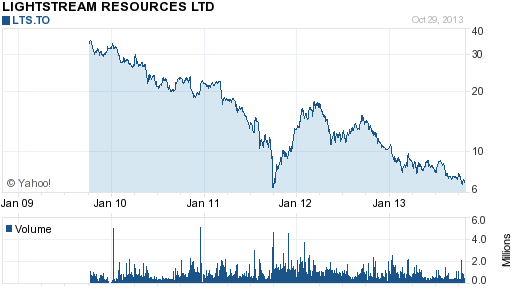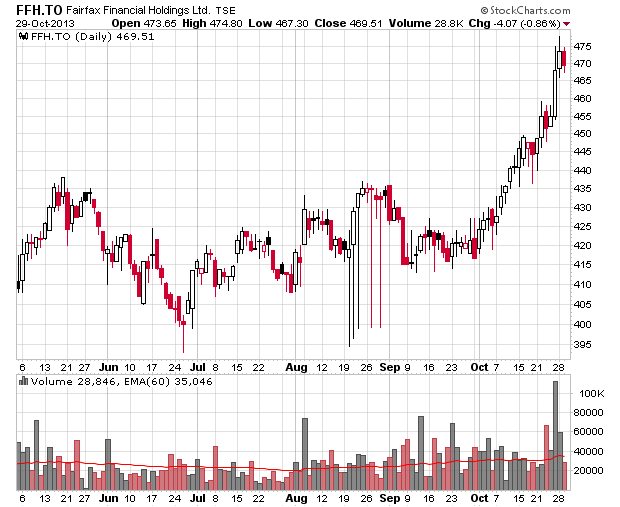It has been some time since I’ve written about Petrobakken (prior slew of articles here), now renamed Lightstream Resources (TSX: LTS).
Pretty much the trajectory to its share price was what I was more or less expecting, simply because investors would come to the realization that capital expenditures are indeed expenses that are incurred today, as opposed to over some mythical amortization curve:
A few weeks ago the company announced its targeted production rates, but finally started introducing language concerning the leveling off of its production. The language used in the release was quite creative:
As our resource play assets mature and our base decline rates gradually reduce, we continue to work towards levelling out our production profile and increasing our annual average production levels on a year over year basis. As we enter the fourth quarter, we are on target to exceed the lower end of our forecasted 8% to 12% annual average production growth (46,000 to 48,000 boepd) and we continue to target exit production in excess of 47,000 boepd. By addressing facility challenges and executing the remaining components of our 2013 capital program, we believe these achievements will be met within our capital budget of $700 to $725 million.
We are currently finalizing our operational and financial plans for next year and remain committed to improving our sustainability ratio (cash outflows compared to cash inflows), lowering our debt to cash flow ratio and improving our liquidity through the many options available to us, which include, but are not limited to, modulating capital expenditures, selling assets, terming-out debt, altering our dividend program or issuing equity. Over the long-term, we continue to target a sustainability ratio of 100% and a debt to cash flow ratio of 2.0 or less. We plan to announce further details with respect to these options when we release our 2014 guidance later in the fourth quarter of 2013.
I love the use of the word “modulating” instead of what it really is – a reduction. Once the production curve is levelled, the financial game is finally over – there is a very clear indication how much money is required to maintain stable production. And investors figured out some time ago that it is quite expensive to do so for what they are purchasing.
So when we look at the debt side of the balance sheet, both the banks and the bondholders are wondering how they’re getting their $2.1 billion back. The bondholders have to wait until 2020, but the banks will extract their pound of flesh in 2016 unless if the company gets serious in reducing its cash burn profile.
There is only one way this is going to occur – a reduction in dividends. They tried doing this stealthily by introducing a stock component to the dividend, but this will only further increase the erosion of the value of equity holders in the company. The lion’s share of cash will be going to debtholders in the future. That said, there is some value in the equity, but just not what it is currently trading for.


